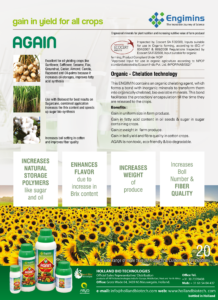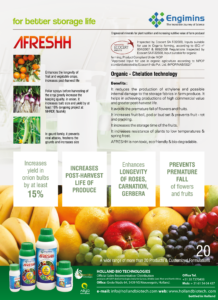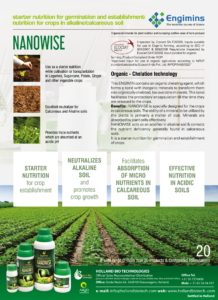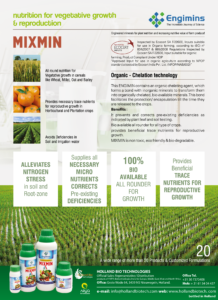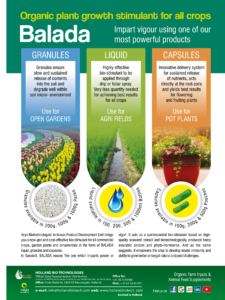Product User/Application Manual
Our Products
Overview our products
You can view our approved products on the SKAL dutch input list.
VIEW OUR SKAL APPROVED PRODUCTS HERE
Product information (translated)
Our Products?
Benefits of this technology
1.Eco friendly input- Eco-friendly output:- We use aerobic fermentation process in presence of eco-friendly micro organism to produce organic Gluconic Acid. It is used extensively as sequestering agent for metal ions in alkaline system. The outstanding property of Gluconic Acid is excellent chelating power, especially in alkaline and concentrated alkaline solutions.
2.Longer shelf life –Plant/Animal friendly input.:-Gluconic Acid forms a bond with inorganic mineral to form organic chelated mineral. This bond facilitates the protection of nutrient till the time it is delivered to the host.
3.Optimum utilization through nano technology :- Our products are organic salts in chelated form capable of supplying nutrients in absorbable condition to the host in lower dosages.
The concentration of minerals in amine Gluconic Acid(and its salts) is much higher than other available chelates.
These bio available nutrients are unique from other mineral supplements because they utilize a new scientific technology developed by us.
By this technology, insoluble minerals(metals)are transformed into highly water soluble micro particles. The ability of a mineral to be utilized by the host is primarily a matter of size. These micro particles are not only absorbed, but also are assimilated (bio-available) by host very effectively.
This product is water soluble, stable over wide pH range, bio-degradable, compatible with most agro-chemicals and a viable alternatives to chemical farm inputs.
This is nano technology at its best!
4.Application convenience:- Our plant nutrients can be applied through foliar spray, soil drenching , drip irrigation. Animal nutrients can be applied by mixing in water or alongwith animal feed.




